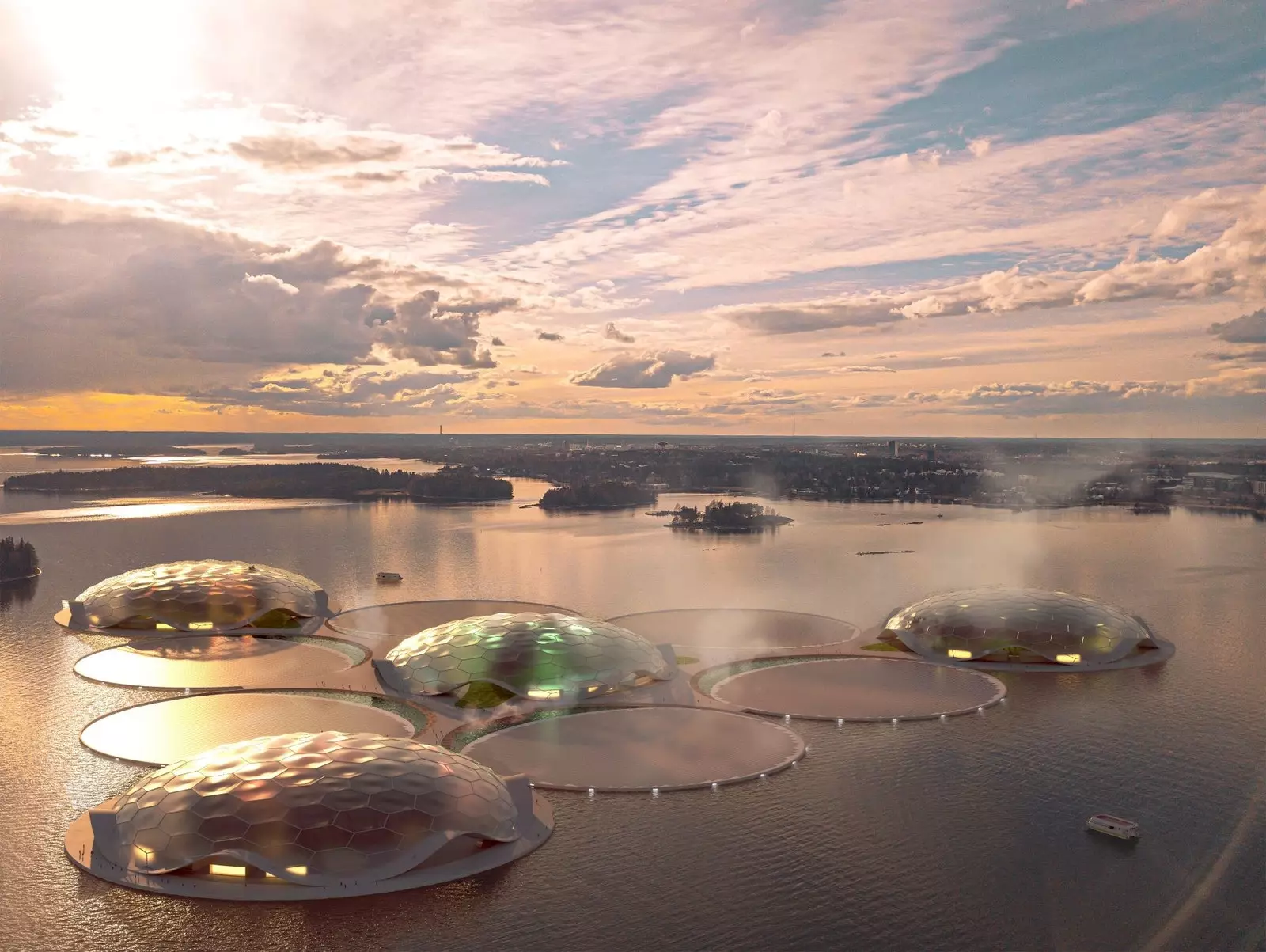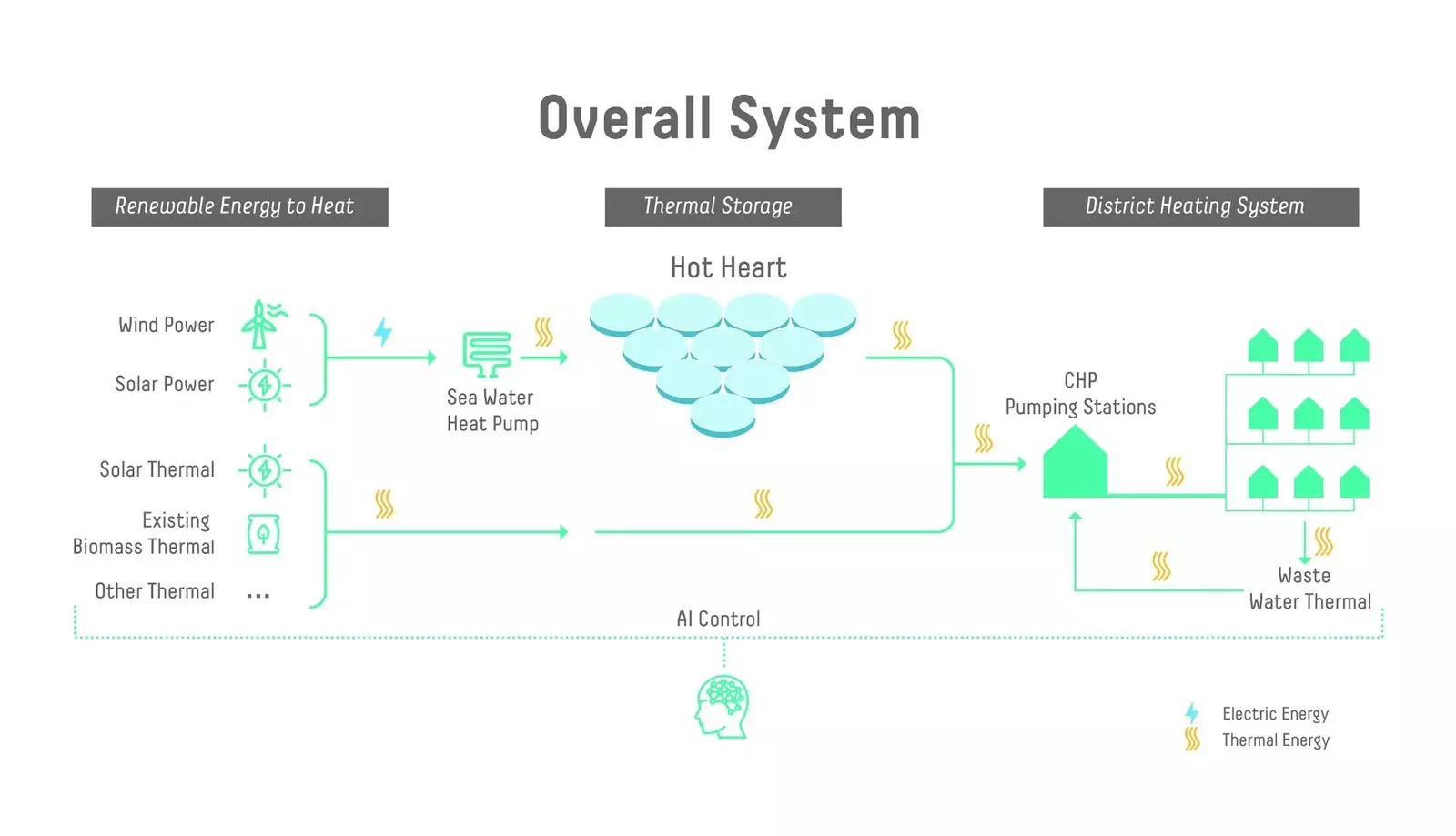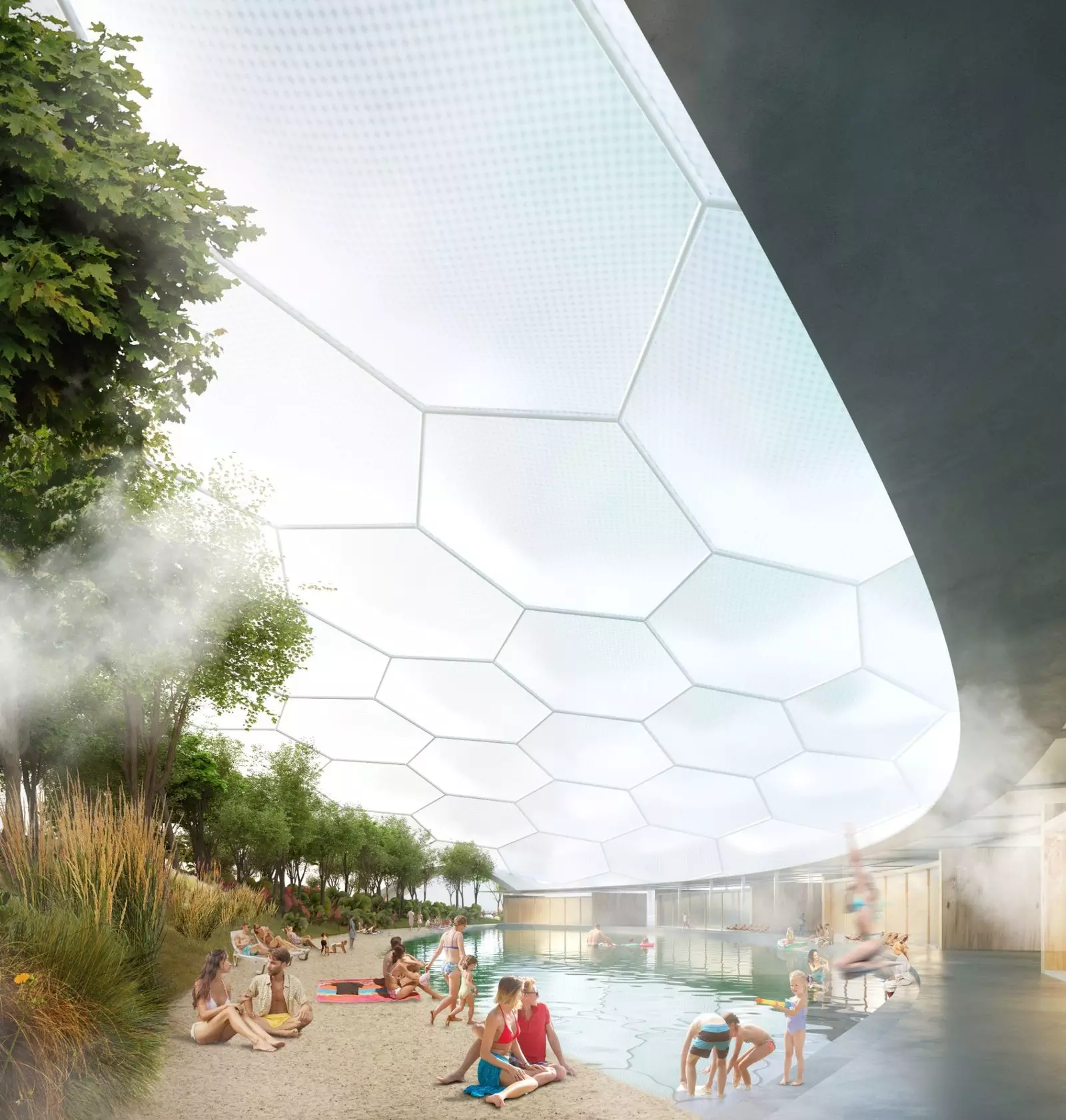
Helsinki thermal batteries will resemble an archipelago
The question was clear: How can we decarbonise heating in Helsinki using as little biomass as possible? Or in other words, how can we eliminate the carbon footprint required to heat the homes and establishments of one of the coldest capitals on the planet using the minimum amount of fuel? The best response, they promised from the Energy Challenge, the energy contest launched by the Helsinki City Council, would be implemented in the city, the most committed to sustainability in the world. The winning project would also take one million euros.
Finally, the winner of this global contest that aims to help make Helsinki carbon neutral by 2035, has been Hot Heart ("Warm Heart"), a joint effort by Ramboll, Transsolar, Danfoss Leanheat®, Schneider Electric, OP Financial Group, a partner of Schlaich Bergermann, and Squint/Opera, all coordinated by the Italian architecture firm CRA-Carlo Ratti Associati.
"The project is based on an archipelago of heat storage basins with the dual function of storing thermal energy and serving as a center for recreational activities ", they explain from the study. Thus, Hot Heart will be the world's largest infrastructure of this type: it will consist of ten cylindrical buckets, each 225 meters in diameter, located off the coast of Helsinki. Together, they can contain up to ten million cubic meters of water. works like a giant thermal battery : low-cost or even negative-cost renewable energy is converted into heat, stored in tanks and distributed to the city as heat during the winter.

This is how the 'Hot Heart' system will heat the city of Helsinki with renewable energy
HOW DOES HOT HEART WORK?
The artificial archipelago will use seawater heat pumps to convert wind, solar and other forms of sustainable energy into heat , which will be stored in the warehouses, the "islands". The system, operated by artificial intelligence, will synchronize the production and consumption of thermal energy, which will help stabilize the national energy grid in relation to the fluctuation of supply. Hot Heart is expected to cover all of Helsinki's heating needs , estimated at 6,000 GWh by the end of the decade, all without carbon emissions and with an estimated cost 10% below the current one.
"Renewable energy production is getting cheaper, but storage is still extremely expensive . Our idea is to use the giant 'thermal batteries' to store energy when prices are low or even negative, and extract it when required by the district heating system when demand is high. This model also would be applicable to many coastal cities with similar climates ”, says Carlo Ratti, founding partner of CRA.
TROPICAL FORESTS, THE MOST PLAYFUL PART OF HOT HEART
In addition to its function as thermal storage, Hot Heart will also be an attraction for locals and visitors , as well as a new educational space. The reason? Four of the ten hot water tanks will be enclosed in transparent domes that will contain the so-called " floating forests ". These are ecosystems of the world's major tropical forest areas, naturally heated by the basins below. These forests will provide the public with a place to socialize and enjoy a summer light , even in the harsh Nordic winter, thanks to the use of powerful sun-like LED technology. And, of course, they will have a sauna.

This is what the recreational tropical forests of Helsinki will look like inside
A LONG-TERM PLAN
For Hot Heart to succeed, it must be part of a larger program that is equally visionary and innovative. And it seems that this will be the case: "The heating system is at the center of the battle, since its emissions account for more than half of Helsinki's total emissions ", explain those responsible for the Energy Challenge. For this reason, HIVE ("Hive") will also be implemented, a flexible plan -is able to integrate new technologies when they arise- based on proven solutions, such as the aforementioned seawater heat pumps, electric boilers, solar thermal fields and demand-side management measures.
Beyond Fossils ("Beyond fossils") will be the energy transition model used. It will be based on technology-neutral open clean heating auctions , paving the way to a carbon-free Helsinki in a flexible way that enables innovation. And finally, Smart Salt City will be implemented, a solution that combines a new storage of thermochemical energy and artificial intelligence with commercially available energy technologies.
“The energy sector is undergoing a remarkable revolution and we are facing systemic change on many different levels. We didn't expect the competition to come up with a single solution that would solve the entire puzzle. Instead, we now have in our hands a very wide range of solutions, which will help not only Helsinki, but also other sustainable and innovative cities that seek an answer to the need for heating, ”explained the mayor of Helsinki, Jan Vapaavuori.
